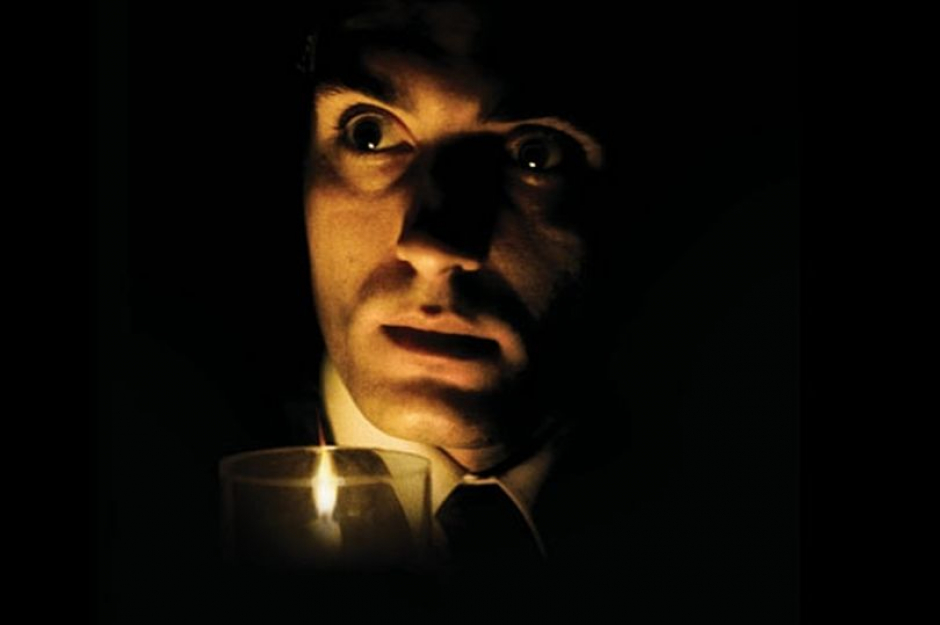The Woman in Black, directed by Robin Herford, The Lowry; March 20 2017.
Having watched plenty of horror films in my time, I was surprised to find myself viscerally spooked after reading one of the few horror novels I have ever read, The Woman in Black by Susan Hill, in preparation for this review. I found the experience to be far more unnerving than watching a horror film and the effects longer-lasting, perhaps because when reading there is nowhere for the ghost to escape, no displacement through an image, or sound, and so the ghoul takes residence – you own it and it owns you. Or perhaps I was caught at a bad time. Or perhaps it’s Susan Hill’s writing (I was haunted by her tale of bullying, I’m the King of the Castle, for months). I now intend to seek out more horror fiction (to displace the Woman in Black in Residence) or perhaps write my own, although as this stage adaptation suggests, some demons may never be fully exorcised.
In the novel, Arthur Kipps is compelled to write an account of his experiences with the Woman in Black as a form of catharsis, an attempt at purging himself of the memory. The stage adaptation takes this frame a step further, as Kipps seeks to share his finished account with his family and friends, in what he hopes to be his final act with the Woman in Black. The play is framed neatly as a play within a play telling a story within a story. Not only is this an homage to the theme of the novel, but its execution it is also an homage to the power of theatre itself.
I was expecting special effects and theatrical technology, and perhaps hoping for my own dramatic cathartic showdown with the Woman in Black, but this play does not attempt to compete with Hollywood. Director Robin Herford’s The Woman in Black thrives on the building of dramatic tension and understated special effects that give the audience the requisite thrills while maintaining the suspension of disbelief and avoiding farce. Playwright Stephen Mallatratt’s inspiration for his approach towards adapting this horror was apparently the Chorus in Henry V: ‘A kingdom for a stage, and princes to act’, and indeed, The Woman in Black is a play for actors. In this case two superb actors.
As if Mallatratt were thinking aloud, we watch Arthur Kipps, played by David Acton, and ‘the Actor’, played by Matthew Spencer, brainstorm how to bring Kipp’s story of the Woman in Black to life. The play begins with the traumatised, timid old man, Kipps, nervously reciting his account, only to be interrupted by the Actor, an enthusiastic, exasperated and innocent young man not unlike the young Kipps in the novel, who eventually guides him towards an amped-up, theatrical re-enactment of the happenings, rather than a dull retelling. Thus, they form a brilliant comic duo that survives the many frights and dark turns ahead. With classic theatrical skill, the two inhabit the world of Hill’s Woman in Black, taking the parts of its many characters and using mime brilliantly, ensuring an invisible dog does not remain invisible for long, and a wicker basket and two chairs are a pony and trap and train as much as they could ever be. The production seemed absolutely seamless, clear evidence of its gradual evolution on London’s West End over 27 years. I was not surprised to read that director Robin Herford likes to change his cast of two every six months, as the enthusiasm and freshness of David Acton’s and Matthew Spencer’s performance would otherwise have seemed otherworldly!
The play relies heavily on the audience’s imagination, but we are given plenty of seeds to bring it to fruition throughout the course of the play. The sets and lighting were impressive, including a sloping stage, decaying décor, evocative white sheets here and there as if the classic ghost were making a cameo appearance, and particularly shadow play, employed expertly both to emphasise the horror as well as to create a sense of space. The sound effects too were particularly effective – steeped in the reality of the play the effects come from recordings made by the Actor, except when they do not… children screaming at the precise moment the auditorium was snuffed out into darkness was a particularly fun moment. Sensory deprivation it seems, is the key to heightening fear. However, such effects were kept to a minimum, which probably maintained the undercurrent of seriousness and tension, though at times the impressive and charming craftsmanship of the play and the comedy between the main characters was almost too distracting from the fear factor.
The Woman in Black is an ode to the theatre, a celebration of all that can be achieved with an actor’s skill, clever lighting, stage smoke, sound effects, evocative sets and the audience’s imagination. A refreshing reminder that a story can be far more effective, and more haunting, when it is allowed to be co-created.

